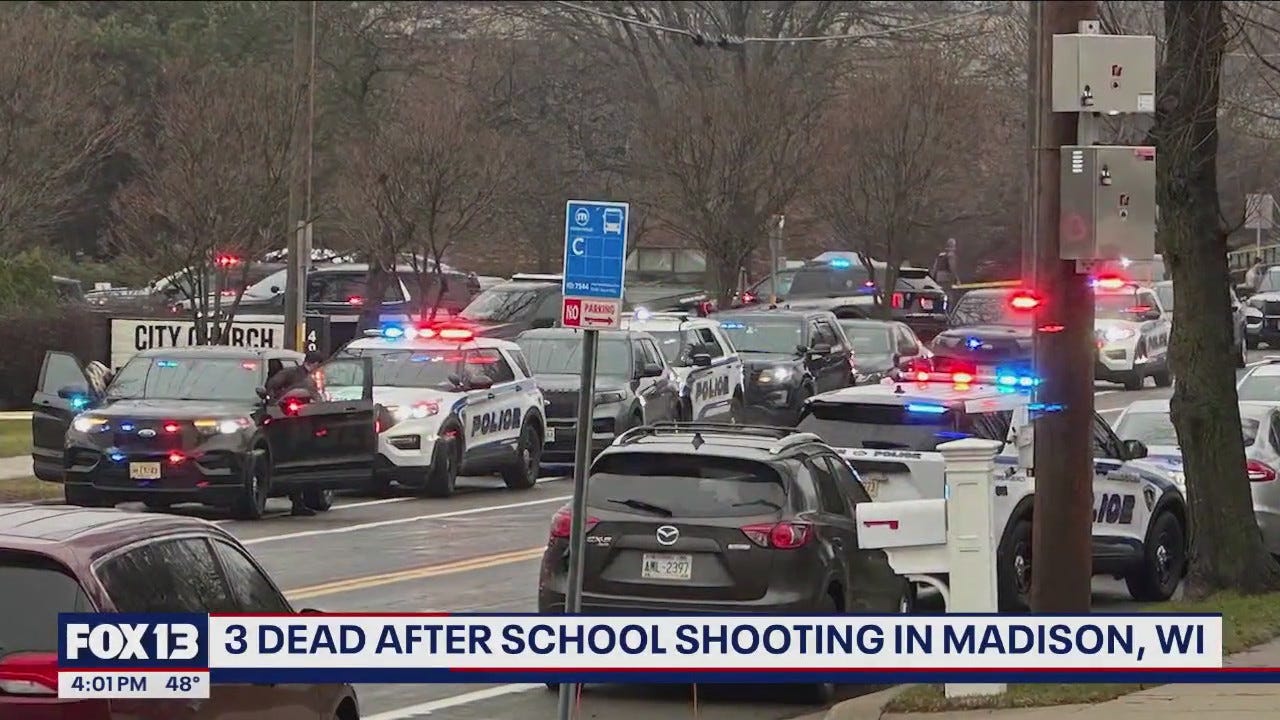The Tragic Case of Natalie Rupnow: A Reflection on the Failures of America’s Education and Mental Health Systems
In the quiet city of Madison, Wisconsin, a day that should have been filled with holiday cheer turner into one of mourning after a school shooting at Abundant Life Christian School. The perpetrator was identified as 15-year-old Natalie “Samantha” Rupnow, a student at the very school where the tragedy unfolded. This incident not only devastated a community but also cast a stark light on the systemic failures within America’s education and youth mental health systems.
On December 16, 2024, Rupnow opened fire in a classroom study hall, killing a teacher and another student before turning the gun on herself. Six others were injured, with two in critical condition. The swift response by law enforcement, prompted by a 911 call from a second-grader, underscores both the bravery of the young witness and the grim reality of gun violence in educational settings.
The education system in America has long been criticized for its inability to address the diverse needs of its students. The shooting yesterday shines a light on several questions that arise as a result of this terrible tragedy.
Schools are often the first line of defense in spotting signs of distress or behavioural changes in students. However, the pressure on educators to focus on academic achievements, while carefully navigating all of the new policies and curriculum amendments in our society today, often overshadows the need for mental health observation. There’s no public information suggesting that any intervention was in place for Rupnow, despite her reportedly dealing with personal problems.
While Abundant Life Christian School had some security protocols like lockdown training, the absence of metal detectors or a school resource officer might have contributed to the ease with which Rupnow was able to access a firearm. This incident reignites debates about school safety measures, highlighting a possible oversight in physical security despite the known risks.
Teachers are expected to be educators, counsellors, and sometimes even guardians without sufficient support or training in mental health issues. This can result in missed opportunities for identifying students at risk, as educators might not have the tools or time to manage such responsibilities effectively.
The mental health system for youth in America is notoriously fragmented. Even when symptoms are recognized, access to mental health services can be prohibitive due to cost, stigma, or lack of available professionals, particularly in less urbanized areas like Madison. There’s no indication that Rupnow received or sought mental health support, which could have been a critical missing link in preventing this tragedy.
The stigma surrounding mental health, especially in religious or conservative communities, might prevent individuals from seeking help. Many times youth in these environments may present warning signs that indicate possible mental health symptoms. There is a temptation at times, by religious organizations, institutions, and communities, to try to remedy the mental health issue with a spiritual health solution. This process is identified as “spiritual bypassing” within the mental health profession.
This can actually present a clear and present danger to youth who may be under additional pressures from that community to confirm to their solutions, that they identify as a spiritual and not a mental health issue, leading to the increase of identified issue rather than an attempt to decrease or eliminate the struggle within the mind of the youth. This is also very dangerous when the person presenting this solution to the youth, has no mental health training and seeks to use a “one-size-fits-all” solution to a problem which is founded in mental health and not in spiritual health.
Mental health services for youth are often underfunded, with schools receiving insufficient resources to provide comprehensive counselling or preventative programs. This lack of investment can have dire consequences, as seen in this case, where a student’s mental health crisis turned violent.
The shooting by Natalie Rupnow is not just a tragic event but a glaring indictment of the systems meant to protect and nurture young people. The education system, while striving for academic excellence, often fails in its duty to safeguard the mental well-being of students. Similarly, the mental health infrastructure for youth remains woefully inadequate, leaving many like Rupnow without the support they desperately need. As a society, there’s an urgent need to re-evaluate how we approach education, mental health, and community safety to prevent such tragedies from recurring. This incident should serve as a catalyst for change, urging educators, policymakers, and community leaders to prioritize mental health awareness and intervention as much as academic success.




